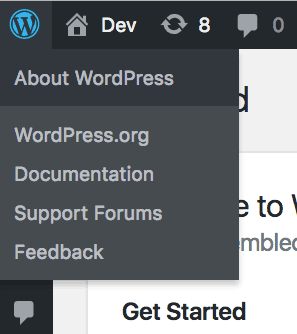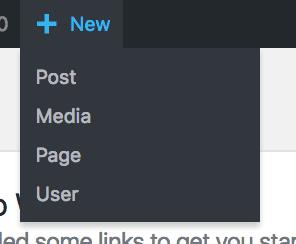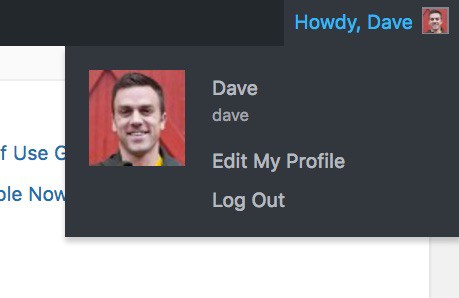A Brief History
The concept of a toolbar was first introduced in WordPress 3.1, and was referred to as the Admin Bar. In version 3.3, the Admin Bar was replaced and renamed the Toolbar.
WordPress Toolbar Links
The main purpose of the Toolbar is to provide quick access to various pages within the WordPress admin area. In part, this is why it remains visible at the top of your screen, even as you scroll down the page.

The WordPress Toolbar comes with a predefined set of links to specific administration pages. Additional links and menus can be added to the Toolbar via plugins and custom code, but this article will focus on a typical Toolbar.
01WordPress Info

About WordPress
This first link takes you to a page that explains what’s new in the current version of WordPress that you are running, along with giving credit to the developers that worked on it.
WordPress.org
This brings you to the homepage for the WordPress project.
Documentation
WordPress maintains official documentation on how to use the software. This link will take you there.
Support Forums
Use this link to get free help & support from the WordPress community.
Feedback
Another link to the WordPress support forum, but specifically to the feedback page. WordPress states this area is for, “giving feedback on WordPress and suggesting new WordPress features.”
02Your Site
The next section in the Toolbar just contains a link to the homepage of your website. If you’re making edits in the admin area, it provides a quick way to navigate to your site’s homepage.
03Updates
Next up is a link to the updates page. This page contains a list of all the available updates to your WordPress site, including:
- WordPress core files
- Your installed themes
- Your installed plugins
If there are updates available, you will see the number displayed next to the icon.
04Comments
The next link over takes you to your comments page. If there are any pending comments awaiting further action, you’ll see a number next to the icon.
05Create New

All custom post types will automatically be added to the “New” dropdown, in addition to other types of content, like forms. This will depend on what type of plugins you have installed.
06Howdy, Dave

- View/Edit your profile
- Logout
It also contains your avatar, or profile image.
Disable the Toolbar when viewing your site
The WordPress Toolbar will always appear in the admin area. By default, it also appears when you’re viewing your live website. However, you can disable the Toolbar when viewing your site.

- Navigate to Users > Your Profile
- In the top section under Personal Options, look for Toolbar
- Simply uncheck the option for “Show Toolbar when viewing site”
- Click the Update Profile button at the bottom
That covers everything you will see in the WordPress Toolbar for a default installation of WordPress. Many themes & plugins modify the Toolbar, so yours might look different. But this should provide a good starting point for understanding how to use it.